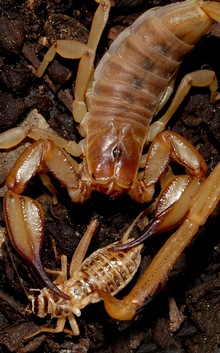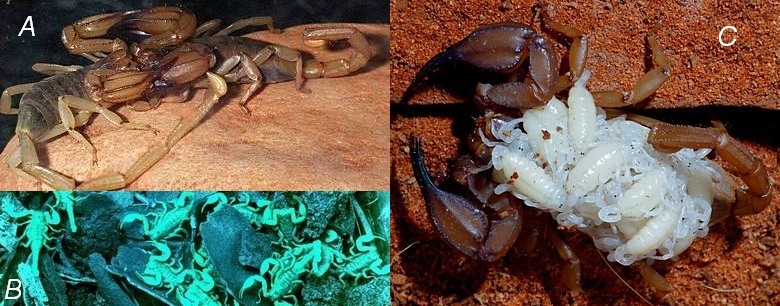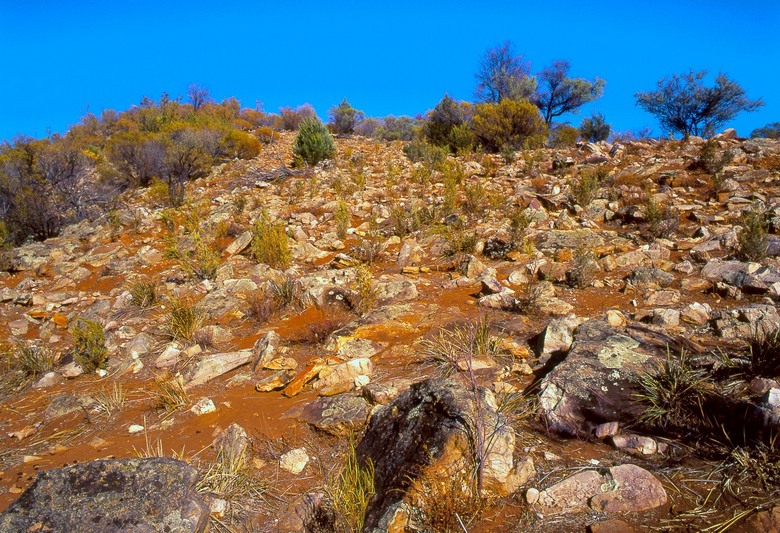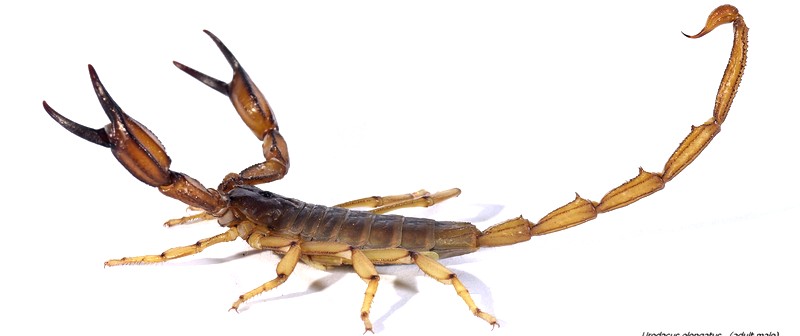
Size: 90-110mm
Ecomorphotype: Semi-Fossorial – Rock Scrape Dweller
Description: A member of the endemic Australian Urodacidae family, whose closest relatives include members of the Scorpionidae inc., Heterometrus, Opisthophthalmus, and Pandinus.
Individuals are generally a uniform dark brown with darker keels on the hands and brachium. No sand comb is present in this species and each foot has two equal length tarsal claws. Cheliceral teeth show a lack of secondary serrations. The telson vesicle is often a light pale colour in contrast to the metasoma. Strongly sexually dimorphic, the males have a very long tail with large metasomal spines which is how the species gets its name.

Adult Male
This species just about always stings its prey before consumption
One of our largest scorpions, this species can reach maximum lengths of 120mm or so. The male utilises the sexual sting to prepare the female for mating. The adult female is a particularly aggressive individual and will not tolerate any other scorpion in its vicinity (in the wild), most notably when gravid.
A rock scrape dwelling species restricted to the damper valley areas of the Flinders Ranges of South Australia. It constructs a scrape under a suitably sized rock with a short burrow at one end. The burrow is sealed off during summer to protect against heat and water loss and it’s during this time that ecdysis takes place. At the end of the hot season, scorpions start to appear in their scrape areas again. New instars having just completed ecdysis and mothers carrying young are most commonly found. The main activity occurs during spring and autumn with winter being a semi-active period where some feeding takes place. Mating occurs in spring with young born in March-April, about 18 months later. This species can produce large numbers of offspring, with 40 not being uncommon. Parturition can take a number of hours and 1st instars will take about 4 weeks before shedding their skins and becoming 2nd instars.

A: Adult Female B: Adult Male

A: Sexual Sting B: 2nd instars C: Female with 1st instar young

Habitat - Flinders Ranges, SA
Reference:
Koch, L. E. 1977. The taxonomy, geographic distribution and evolutionary radiation of Australo-Papuan scorpions. Records of the Western Australian Museum 5 (2):83-367.
